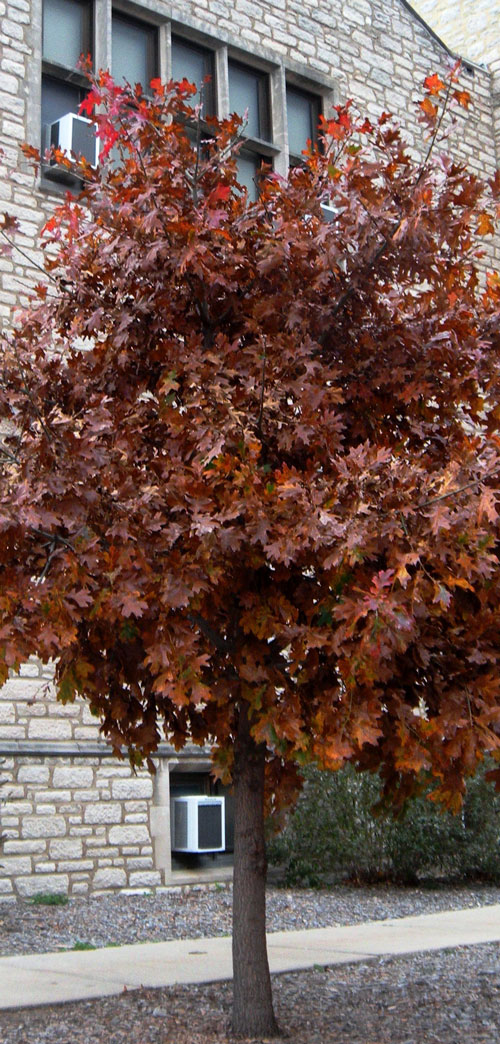Taking an environmentally sensitive approach to pest management
Marcescent Trees Retain Leaves Longer
Published: November 22, 2016

Wondering when all those leaves are going to fall so you can finally get them all raked? The time of leaf drop depends on the cells that make up the abscission or separation zone at the base of the leaf petiole (stalk from the leaf that is attached to the twig). Shortening daylength, frost, or drought can trigger formation of the abscission layer.
In most trees and shrubs, an abscission layer, composed of cells with weak walls, undergoes biochemical changes that cause the cell walls in this zone to dissolve, leaving the leaf dangling until a gust of wind breaks the connection with the tree. As the abscission layer is maturing, a different group of cells at the base of the petiole forms another protective layer of cells, containing compounds called suberin and lignin, to seal the wound after leaf fall. This corky layer protects the tree from disease infection and water loss.
Unfortunately, not all leaves fall at once. Some trees, such as Quercus (pin, red, and white oaks), as well as Fagus (beech) and Carpinus (hornbeam) retain many of their dried leaves until late winter and then drop them intermittently. This tendency for late retention of leaves, dropping them intermittently during winter, with a final leaf drop just before bud burst in the spring is called marcescence. In these types of trees, the abscission zone fails to develop fully during autumn, allowing the leaves to stay on the tree.
The reason why some trees keep their withered leaves into winter is unknown. Some ecologists have speculated that marcescence provides unpalatable leaves as a deterrent to deer browsing on buds or twigs during winter, protecting the trees from damage. Others have suggested that leaf retention is a means of trapping snow, resulting in increased soil moisture at the base of the tree after it melts. However, when this occurs, trees are at risk for limb breakage due to the weight of a heavy, wet snow.
It is known that marcescence is often a juvenile trait that can be lost as some trees age. In a recent study conducted at the University of Missouri, Quercus rubra (northern red oak) trees that had multiple flushes of growth during the growing season, retained their leaves later in the year than those with few flushes. Also, leaves from the last flush on trees having the marcescent trait tended to have higher levels of chlorophyll, as well as slightly higher rates of photosynthesis than leaves from non-marcescent trees (those with early leaf drop).
While scientists are learning more about the genetics of marcescence, keep the rake handy as you will be using it multiple times over the next five months if you or your neighbors have marcescent trees.
Subscribe to receive similar articles sent directly to your inbox!
- FREE Oak Disease Testing in 2024 (08/12/24)
- Garden IPM Starts with Fall Cleanup (11/21/22)
- The Science of Fall Leaf Color (10/20/22)
REVISED: November 22, 2016